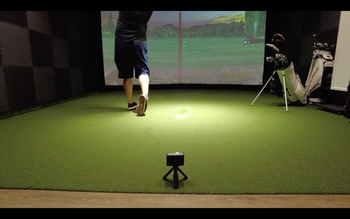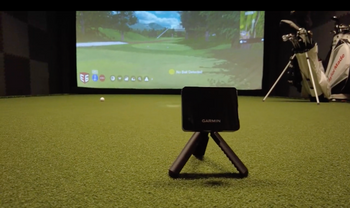If you want to stop shanking your irons, initially check where you're standing—you need about a fist's distance between you and the ball with your weight spread evenly on both feet. Most shanks happen because of an in-to-out swing that comes from a bad takeaway or hands getting too busy, which makes the hosel smack the ball instead of the face. Try the tee drill by sticking a tee just past your ball on the outside, then work on swinging without hitting it to groove a better path. Keep working on these moves for real results.
Table of Contents
Getting to the Bottom of Why You're Shanking
Figuring out why you're hitting hosel rockets might feel like searching for your ball in thick rough, but here's the deal, there are really just five things that cause about 90% of shanks out there.
Number one is swinging too much from inside to out. This mess starts when your takeaway goes sideways, your weight shift gets wonky, or your hands start doing their own thing on the way down. Number two involves grip issues, either holding it like a feather or in the wrong spot. Third is weight transfer problems, where you're stuck on your back foot rather than moving forward. The fourth deals with where you put the ball in your stance. Ultimately, swing plane trouble makes you catch the hosel rather than the face.
Most players think their swing completely breaks down after a shank, but honestly, you usually just need tiny adjustments to move your contact back to the center. What really matters most is how the shaft angle changes and where your hands are about the ball during impact. Once you understand these five trouble spots, you've got your game plan for beating the shanks!

Fixing Your Address Position and Body Setup
Since you understand what's making those shanks happen, let's work on the basis of every solid golf swing—how you set up to the ball. It's like building anything sturdy; you need the right foundation before anything else.
Get your feet, hips, and shoulders lined up parallel to where you're aiming. Quick trick: put a club down on the ground to check your alignment! You want to be roughly a fist's width away from the ball, close enough for good contact, but not jamming yourself up.
To nail your posture, stand tall first, then hinge forward from your hips while keeping your spine straight. Your arms should dangle naturally below your shoulders, with your knees bent just a bit. Keep your weight balanced on both feet, spreading it between your toes and heels. Tons of golfers struggle with shanking, but getting these setup basics right can fix it completely.
Getting Your Grip and Foot Position Right
Even though your setup gives you the base, your grip and foot position are what really make everything click, they team up like peanut butter and jelly to kill those annoying shanks.
Your grip needs to be just right, not death-gripping it, but not holding it like a baby bird either. Squeeze mainly with your last three fingers and keep the pressure balanced in both hands. Squeeze too hard and your wrists lock up, too soft and the club flies around during your swing.
Your foot position matters big time for alignment. Point yourself too far left or right, and you'll create that inside-out path that sends balls sideways. Keep your feet the same width for steady balance, and split your weight right down the middle. This balance stops you from falling back, which is Shank City. Messing up your hand path during the swing makes stance problems worse and causes bad contact.
Don't forget to keep those knees bent through your swing, straightening them too soon wrecks your path and makes you hit the hosel.
Using Specific Drills and Training Tools

Now that you've nailed your grip and stance, let's use some drills that attack your shank problem directly. Try the tee drill initially, stick a tee about two inches past your ball on the toe side. This makes you swing from inside and find the sweet spot every time. The "grip against a chair" drill really helps, too. Keep your club's handle touching a chair during your backswing, this keeps your posture solid and stops you from popping up at impact. Recording yourself is huge! Film your swings to catch path problems you can't feel yourself. Tools like the FatPlate tell you immediately if you're hitting it pure. The headcover drill builds awareness by putting a headcover just past the ball and practicing without touching it. These tools work even better when you combine them with lessons from a good teacher who can fix your specific problems.
Creating Consistent Swings and Automatic Movement
Training your body to swing right isn't about beating balls until your hands hurt; it's about practicing smart so your body learns to repeat good moves without thinking. Begin with super-slow swings where you only care about doing it right, not hitting it far. This creates brain connections that'll work when you're playing for real. Do you set up the exact same way every time, same foot width, same ball spot, same grip squeeze? Here's what matters: being consistent means repeating moves, but only the right ones. Try impact bags for feedback that tells you instantly when you're doing it right. Add drills that build automatic movements and lock in the positions your swing needs. You're basically reprogramming your brain, so don't rush it! Your muscles don't really remember anything; your brain runs the show and builds the patterns that make your swing automatic.
Keeping Shanks Away for Good
Once you've built those automatic movements, the trick is making lasting changes that stop shanks from creeping back into your rounds. You need a complete plan that covers everything about your setup and swing.
Keep working on your posture basics. Hold your spine angle all the way through, let your arms hang loose so you don't crowd the ball, and put it under your front knee for iron shots. Split your weight evenly on both feet; this gives you the solid base you need.
Your clubs matter more than you think! Get fitted for sticks that match how fast you swing and your style. A grip that's wrong for your hands can mess up everything.
Create a pre-shot routine you never skip, with deep breaths and picking your target to stay loose.
Frequently Asked Questions
Will beat-up grooves or crooked clubs make me shank?
Absolutely, gear problems can cause shanks! Beat-up grooves hurt your spin control, making good contact harder. Crooked clubs throw your swing path off, and wonky clubfaces make the ball go anywhere. Clubs that don't fit your height mess with how you naturally swing. Dirty grooves hurt your game too! Check your gear regularly to catch these issues before they cause shanks.
Does windy weather make me shank more?
Wind totally makes you shank more! Into the wind, you swing harder, which adds spin and messes up your swing plane. You'll struggle to keep balance and rhythm when it's blowing. Your ball position changes without realizing it as you lean into wind, moving the sweet spot away. Downwind isn't great either—it makes your swing flatter and changes your timing. Take extra club and swing easier instead of muscling it.
Do I fix wedge shanks different than iron shanks?
You'll want different fixes for wedges compared to longer irons when beating shanks. With wedges, work more on your rhythm and face control since they're shorter and timing gets tricky. For longer irons, focus on grip tweaks and keeping your path consistent. Both need good setup position, but wedges require extra focus on where your weight goes during the swing. The basics are similar, but wedges need a softer touch.
Can being hurt or stiff cause shanking?
Being stiff or hurt can totally cause shanks. If your spine won't rotate right, your body extends early, pushing your hips at the ball on the downswing. Bad backs or hips wreck your turn and balance, while sore shoulders mess up your swing plane. Weak abs make you compensate in ways that cause shanks. Plus, getting tired from old injuries makes it tough to keep good form all round.
Do I shank more when it matters?
You bet you'll shank more when the heat's on! Stress makes your muscles tight and your swing gets steep. Studies prove golfers play a bit worse when it counts versus practice rounds. That tension makes you swing down on it more, which brings the hosel into play. Happens to tour players too! Learning to chill out helps control those pressure shanks.
Conclusion
You've now got everything to crush those shanks for good! Work on your setup initially—that's where most shank issues begin. Doing those alignment drills every day, even just 10 minutes at home, helps. Building the right movements takes around 3 weeks, so hang in there. One bad shot doesn't mean you're broken. Stick with these basics, and you'll be flushing irons again soon!





